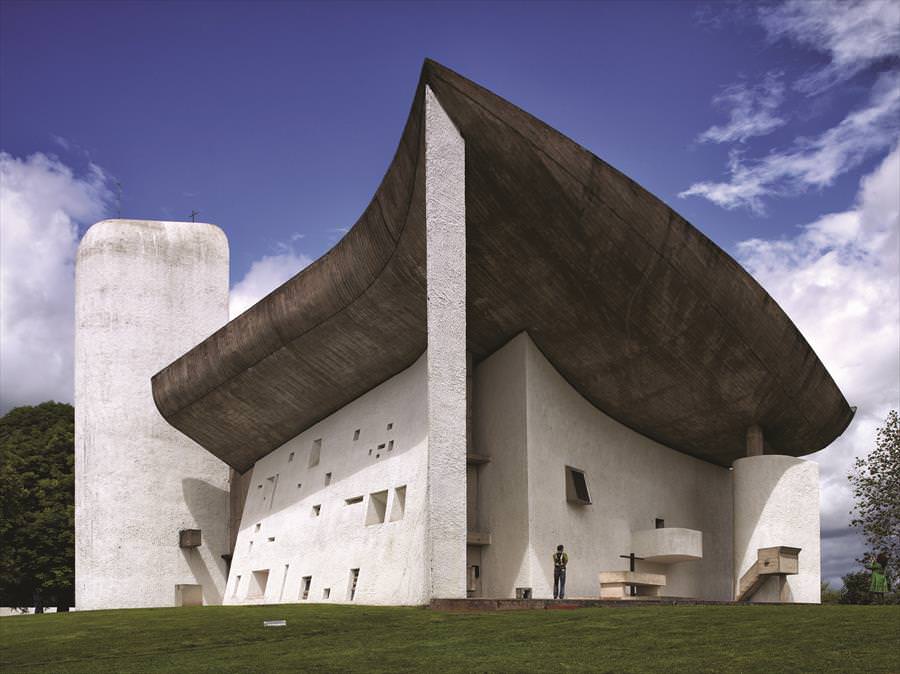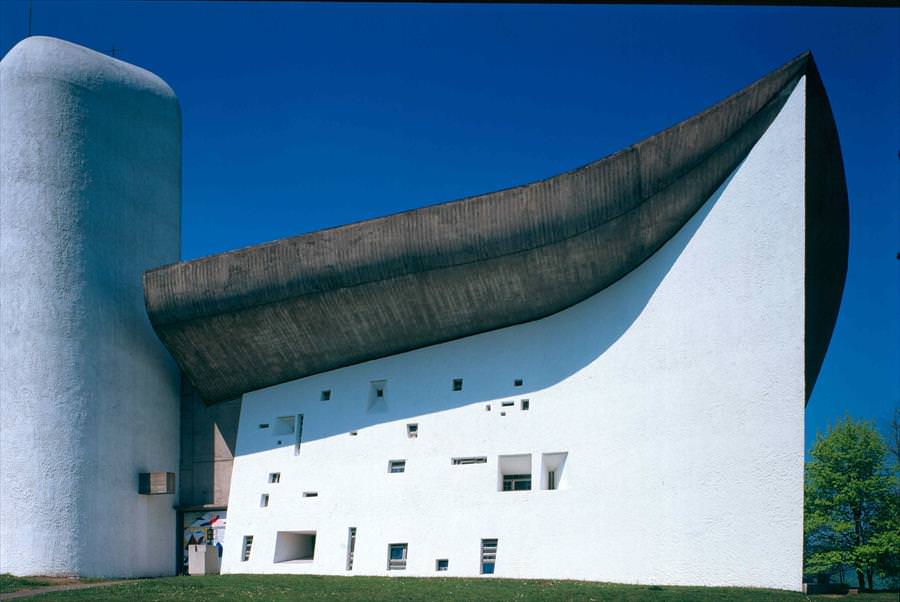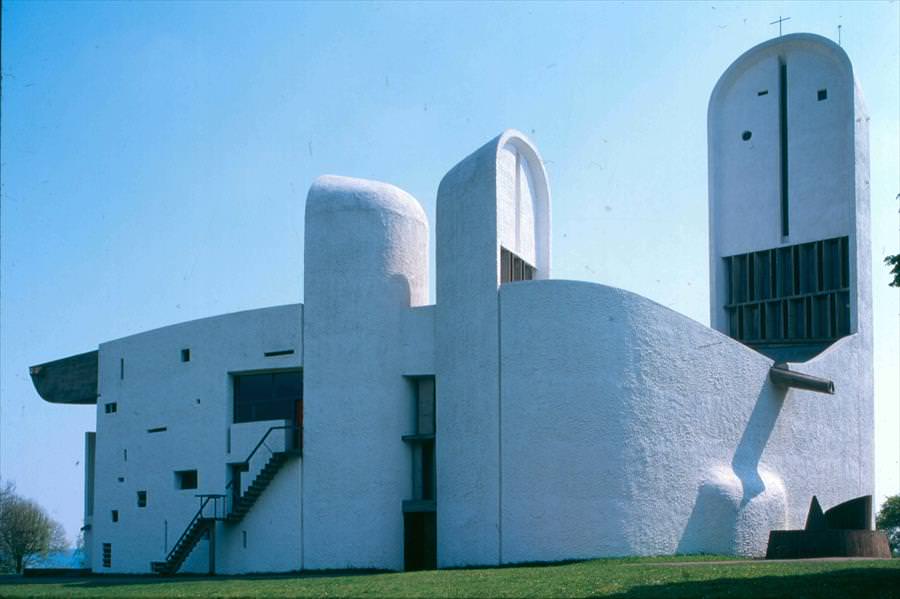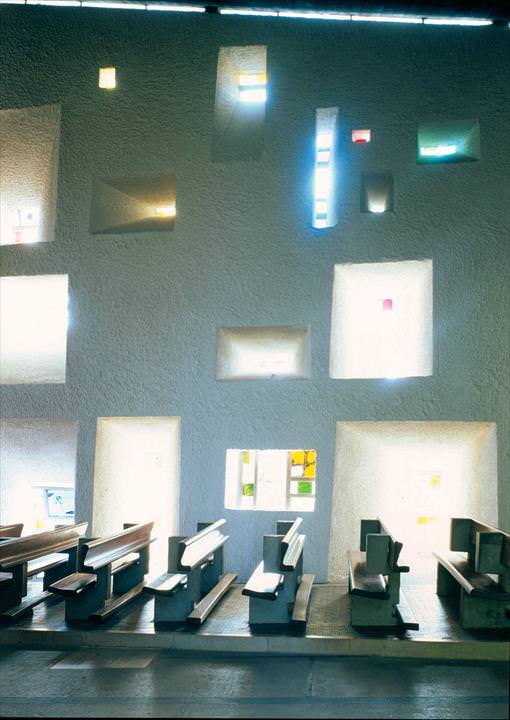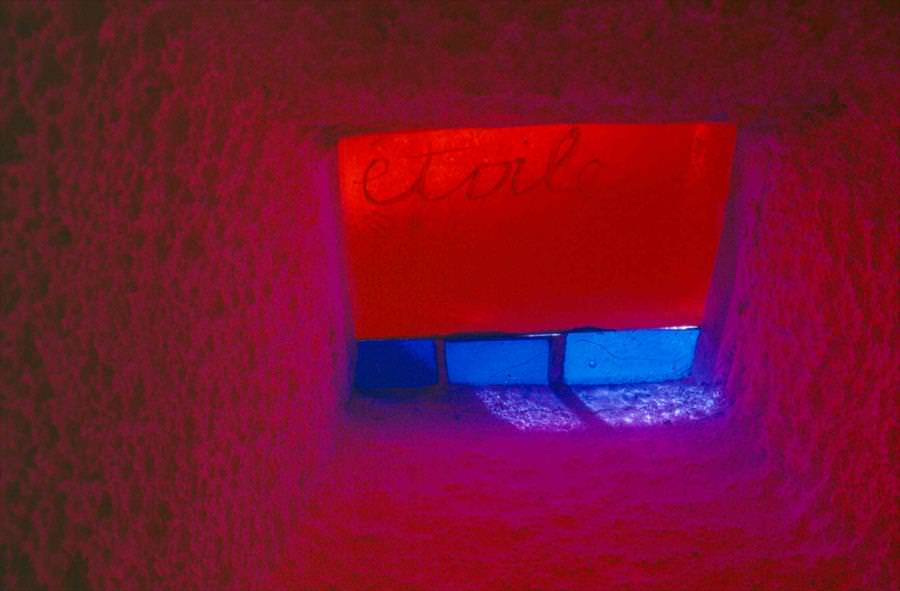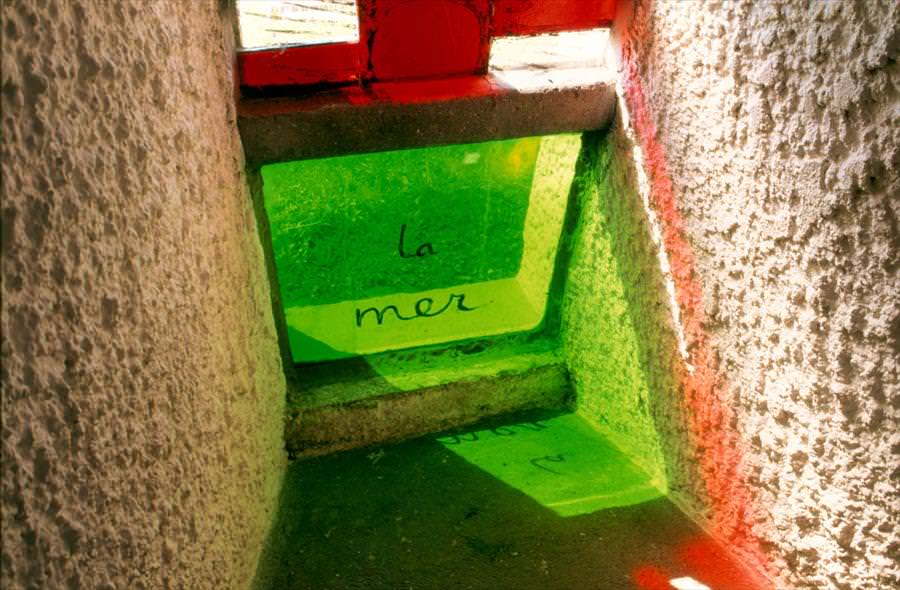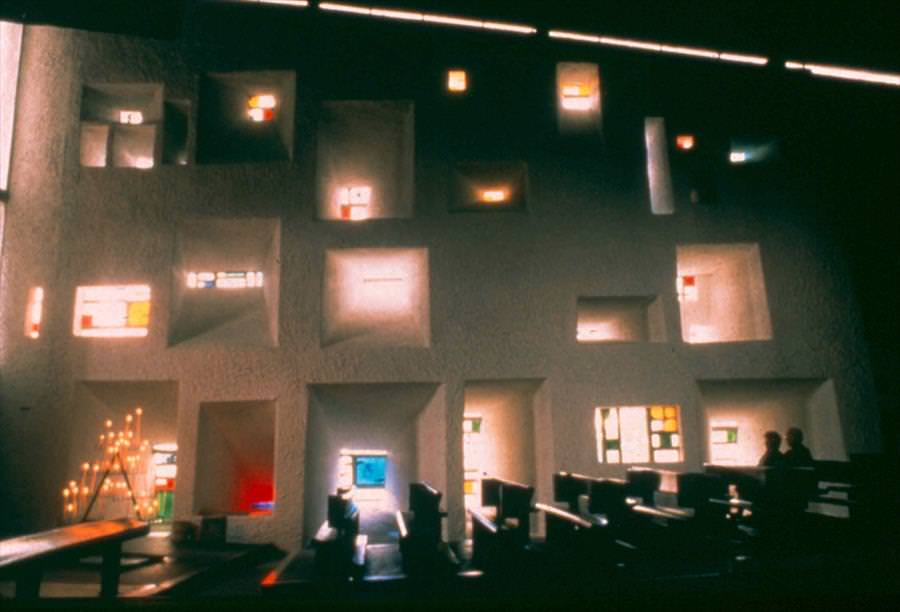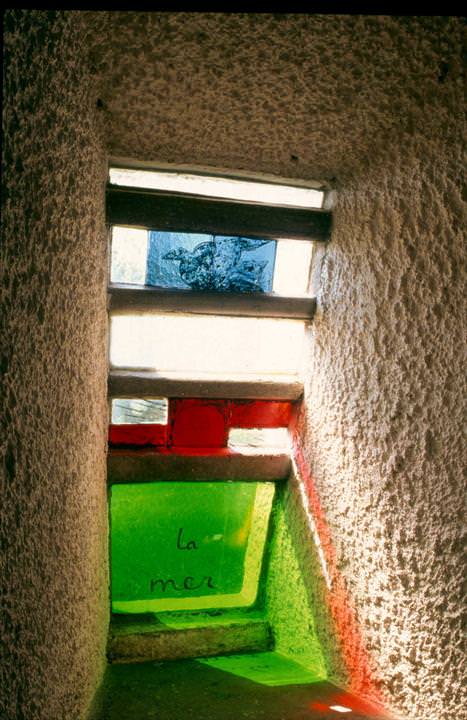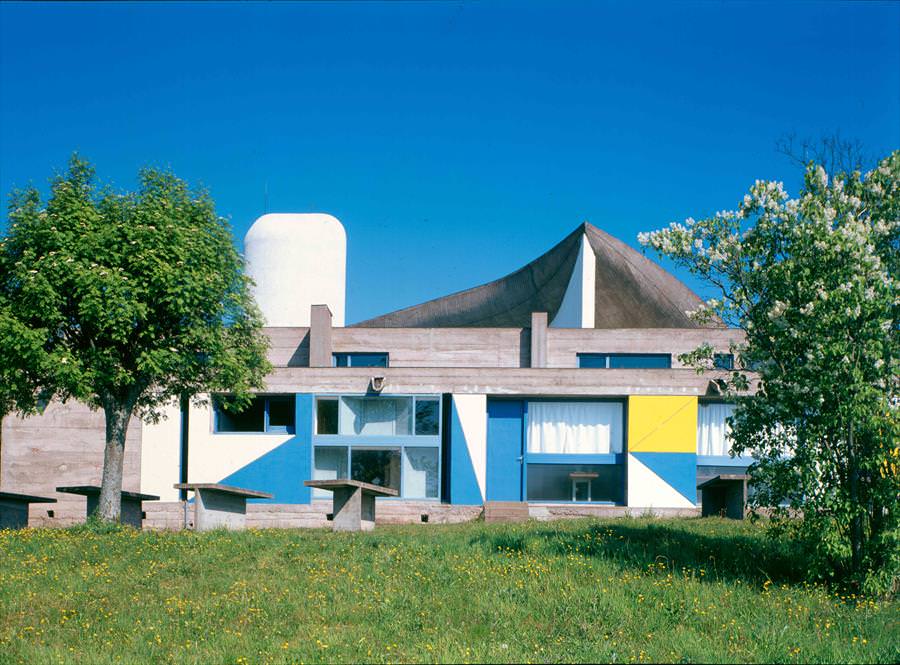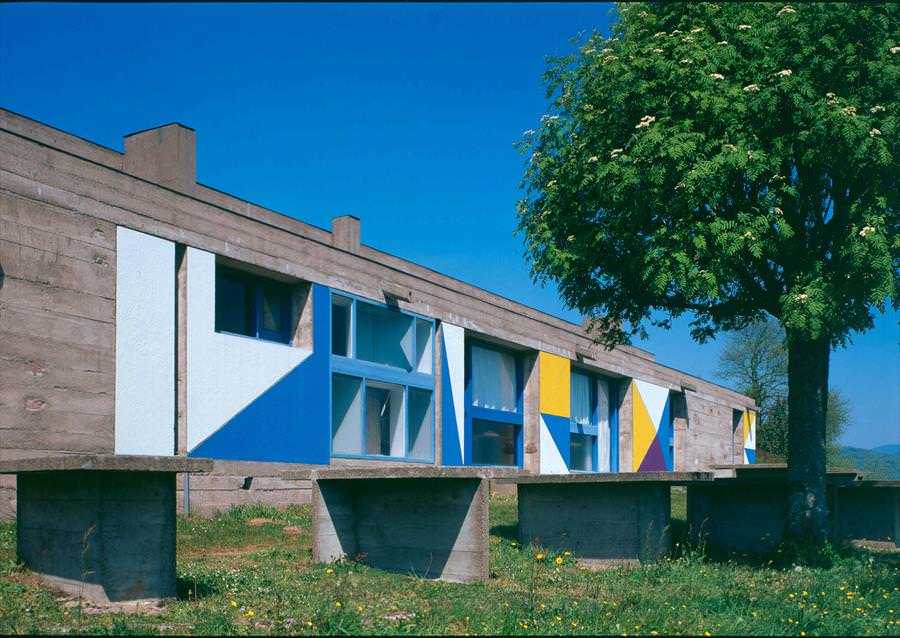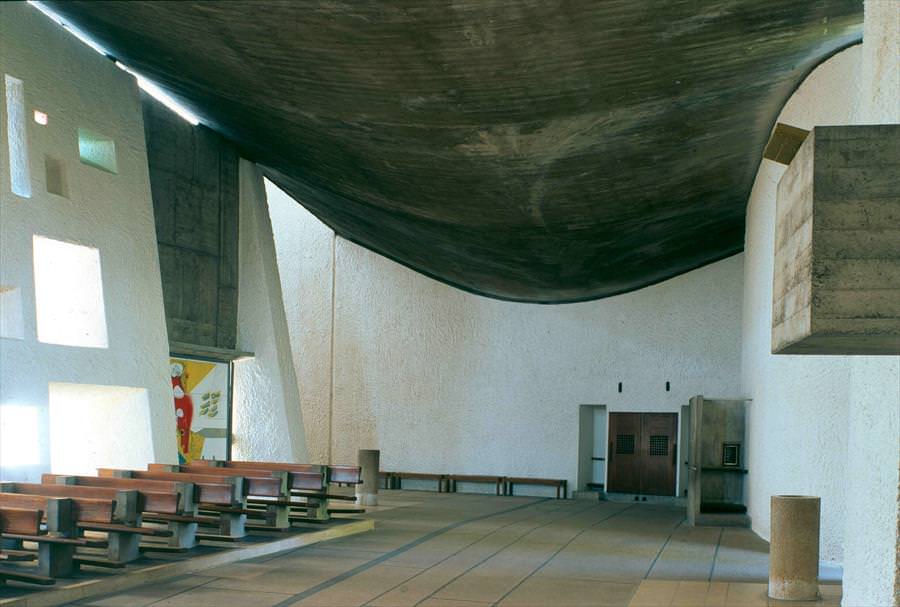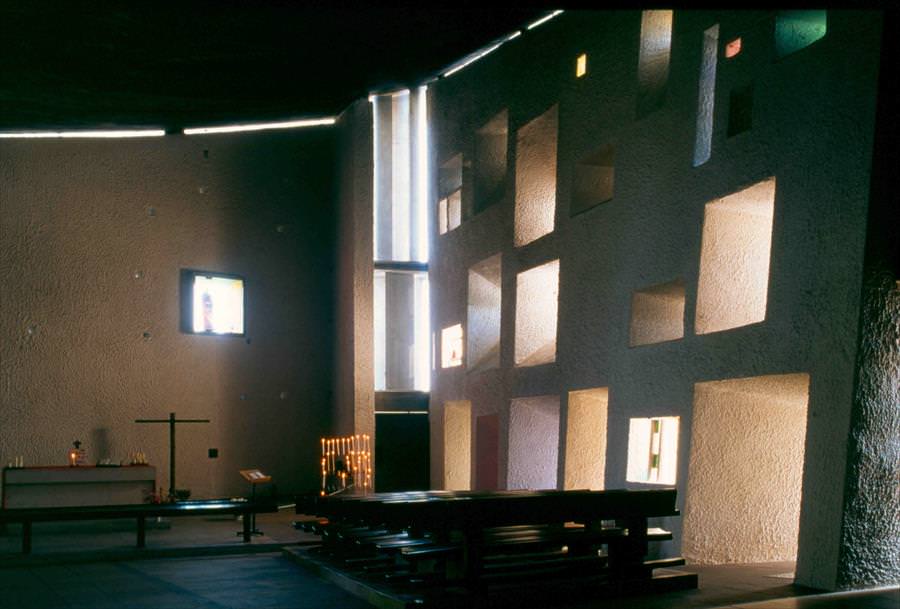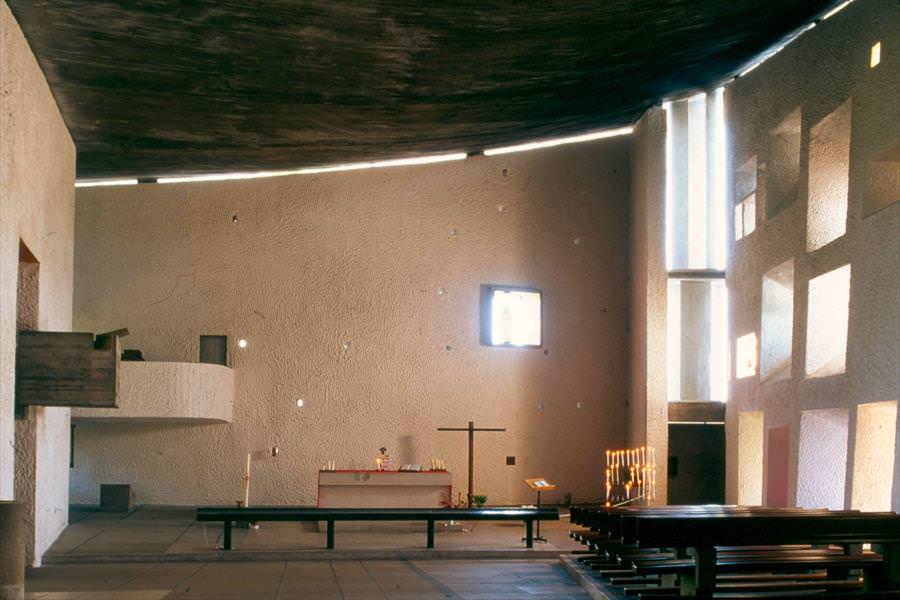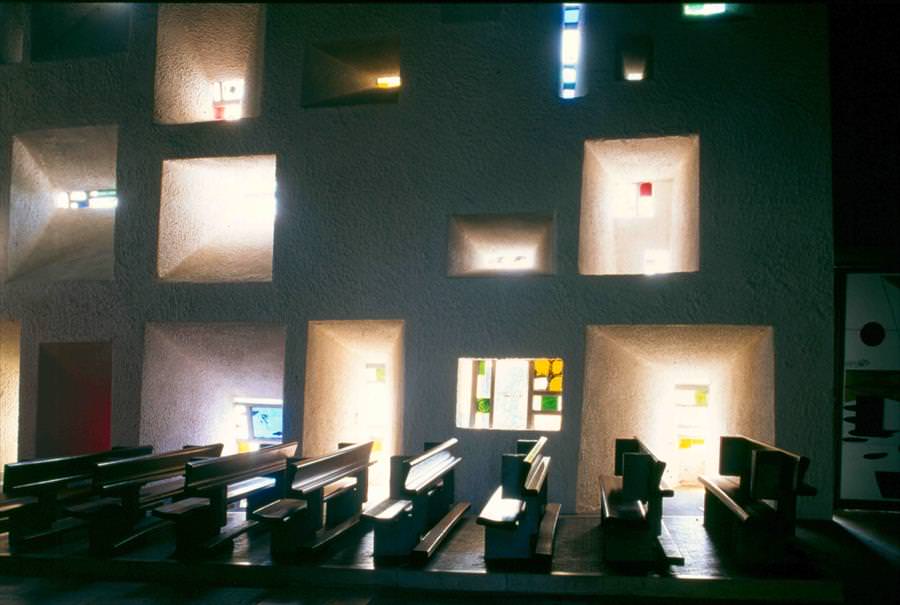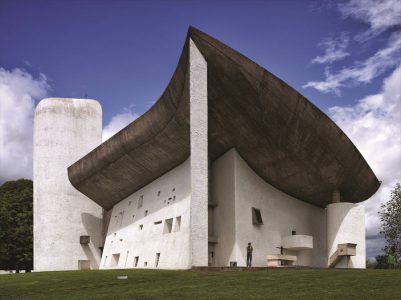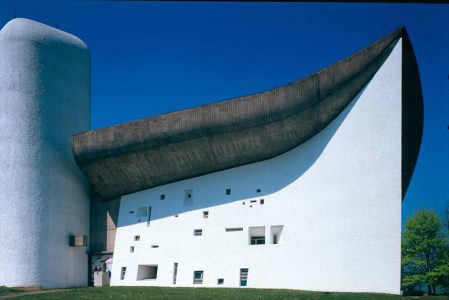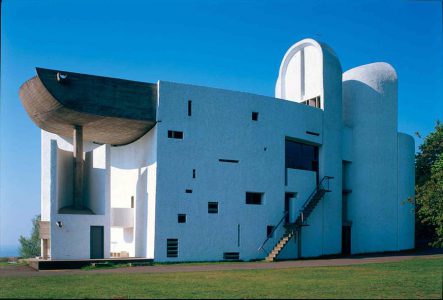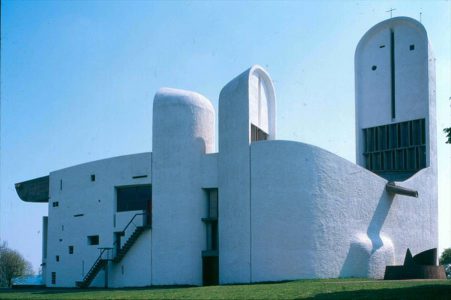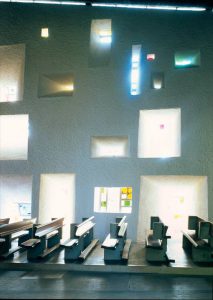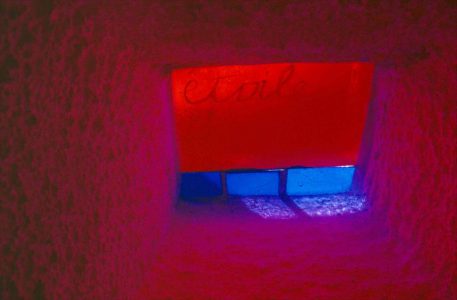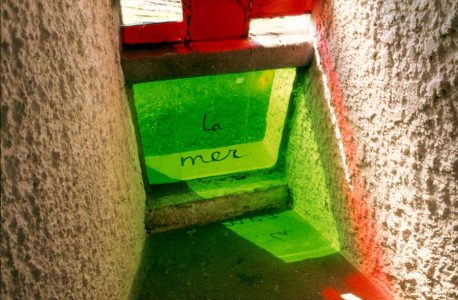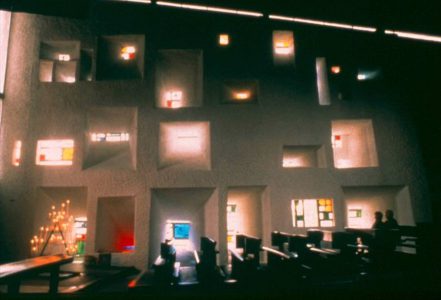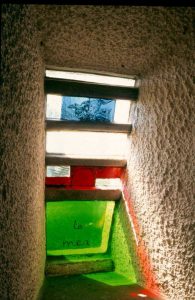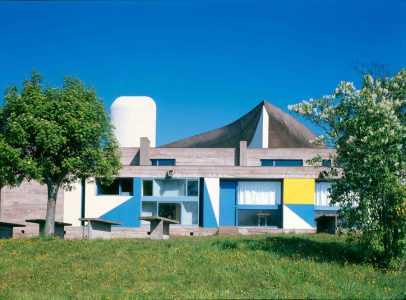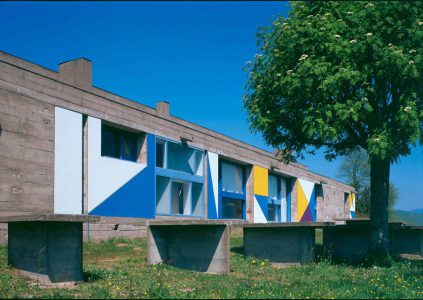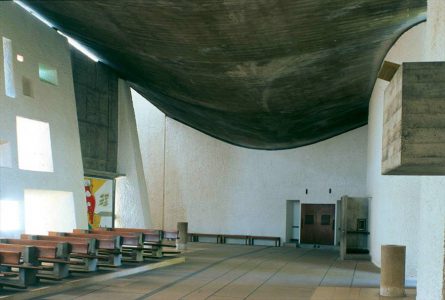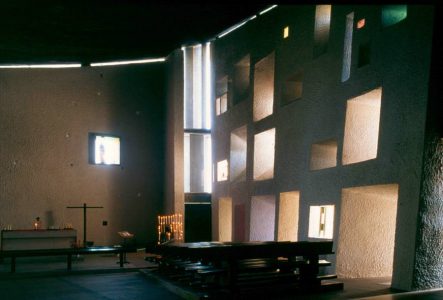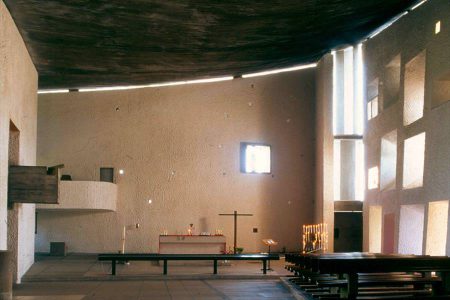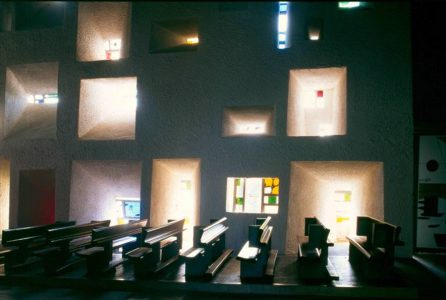Notre-Dame-du-Haut Chapel
Ronchamp, France, 1950-1955
« People often ask me what my secrets are for Ronchamp. Is there nothing but a harmonic search for the problems posed? The gospel: an ethic; the place: the four horizons; the means: the crab shell. »
Commission
The Notre-Dame-du-Haut Chapel is a religious building intended to receive pilgrims. Standing on the hill of Bourlémont, territory of the city of Ronchamp in Haute-Saône, it was built on the site of an old chapel dedicated to the Virgin Mary and destroyed by bombing in 1944.
In the aftermath of the Second World War, the Société Immobilière de Notre-Dame-du-Haut, owner of the site, as well as the diocese of Besançon, on which the Chapel depends, joined forces to carry out the reconstruction project.
The Sacred Arts Commission had the task of choosing the architect: Canon Lucien Ledeur, secretary of the Commission, and François Mathey, inspector of the Historic Monuments of the Vosges proposed Le Corbusier, with the active support of Alfred Canet, secretary of the Société Immobilière de Notre-Dame-du-Haut.
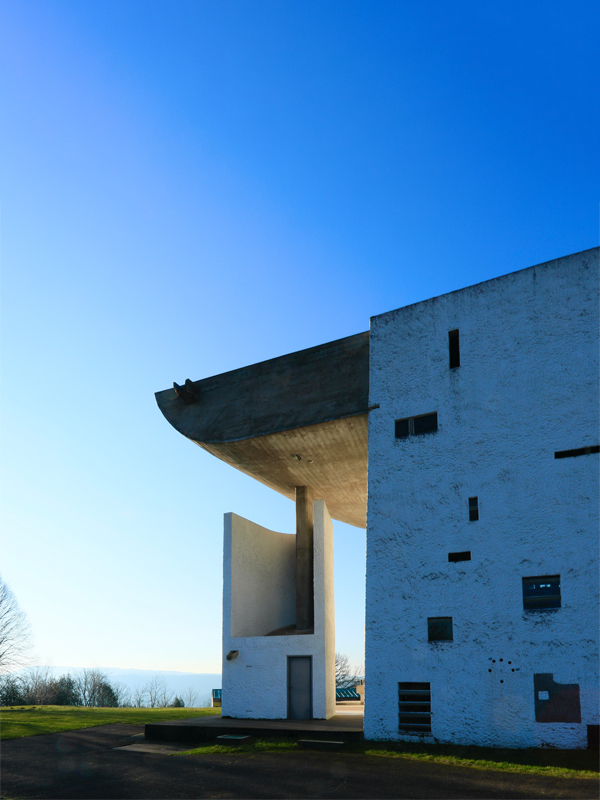
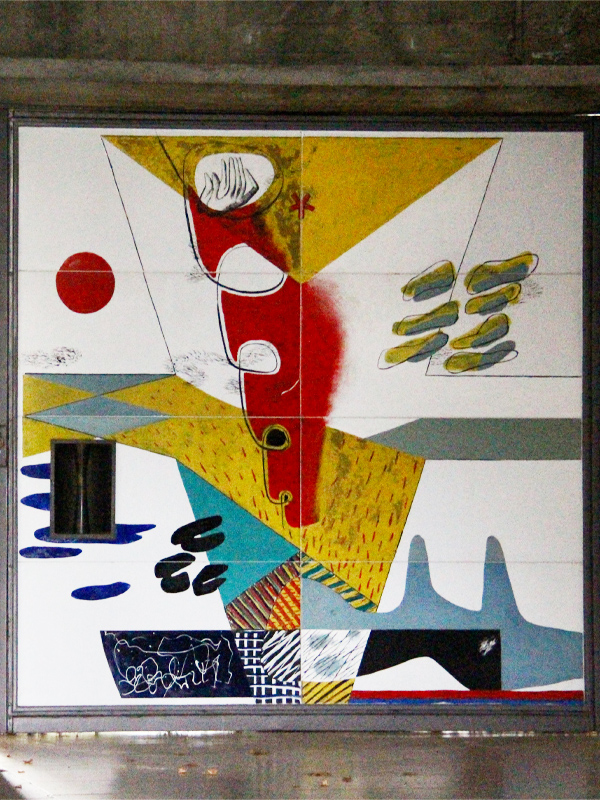
Project
Building began in 1950 and ended in 1953. The official opening took place on June 25, 1955, and at the same time the Chapel was blessed. Its consecration came later, in 2005. The programme was not very restrictive: three secondary chapels were to be added to the main Nave of the Chapel, as well as an outdoor Choir for open-air ceremonies, in particular on the occasion of pilgrimages. A shelter for pilgrims was to be built on the hill below the Chapel. Le Corbusier also planned a house for the Chaplain as well as a cellar and a monument to the dead of the Second World War, called the Pyramid of Peace.
Le Corbusier’s project was thought out in harmony with the environment; the Chapel had to fit perfectly into the space. The position of the new building was essentially the same as that of the old Chapel, stones from which were recovered for the site.
The architect’s proposal drew its origins from many sources of inspiration, the main one being a crab shell picked up on a Long Island beach, an object with a “poetic reaction” dear to Le Corbusier.
Far from the classic plans of traditional religious buildings, the concrete Chapel is expressed in curves, in light, in colours. Notre-Dame-du-Haut echoes the architect’s desire to synthesize the arts. The concrete and wooden benches, designed as sculptures, were made by Joseph Savina, a Breton cabinetmaker with whom Le Corbusier was already working for his personal artistic production; the main door is enamelled on both sides, the glass panes are painted and the light passing through them reveals different colours and shapes. Different techniques are also used on the glass: cold painting, grisaille or stained glass. The acoustics of the chapel are designed so that the priest does not have to raise his voice when speaking or chanting. Le Corbusier planned an electro-acoustic campanile with a modern sound diffusion system but, for want of financing, the project was not retained. After Le Corbusier’s death, it was finally the architect Jean Prouvé who designed the campanile using Modulor proportions. It was installed in 1975.
The different materials chosen by Le Corbusier contribute to the atmosphere of the place: raw concrete, painted plaster, wood, cast iron, bronze. While this resolutely modern chapel has aroused as much negative criticism as enthusiasm, it bears witness to a real turning point in 20th century architecture.
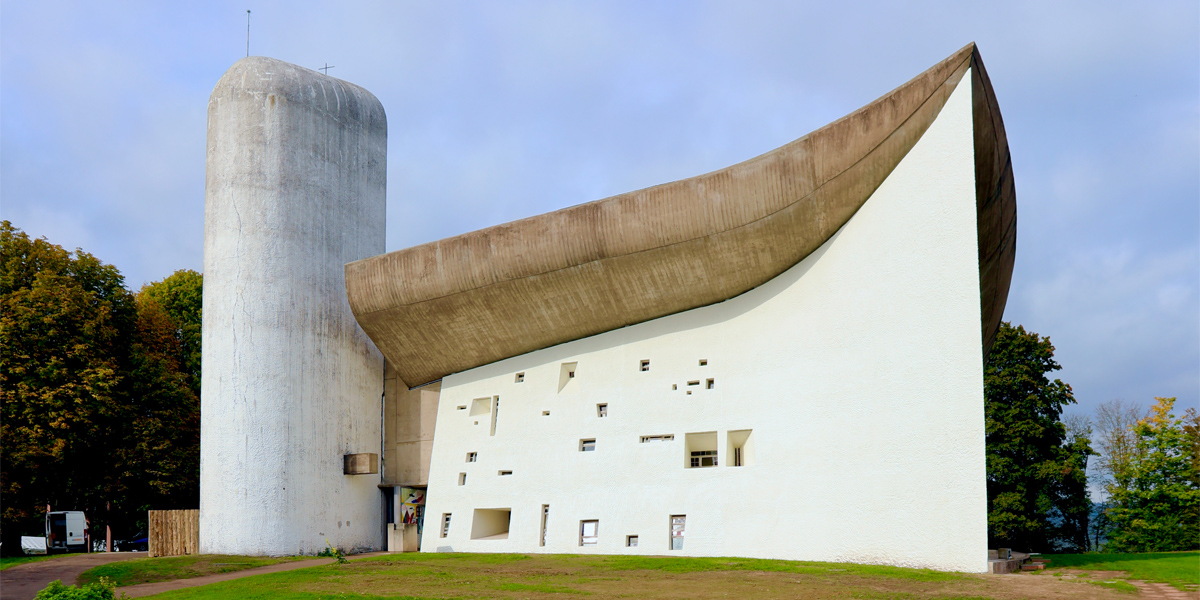
Subsequent History
The Notre-Dame-du-Haut Chapel was listed on the Inventory of French Sites in 1960, as a Historic Monument in 1965 and classified in 1967. The additional constructions, the caretaker’s house, the pilgrim’s shelter, the concrete tables, the cellar, the pyramid, and Jean Prouvé’s bell tower were listed in 2003. Since 2016, the Notre-Dame-du-Haut Chapel has been one of the 17 Le Corbusier sites inscribed on the UNESCO World Heritage List. UNESCO, under the series “The Architecture of Le Corbusier, an Exceptional Contribution to the Modern Movement”.
In 2006, the Association Œuvre Notre-Dame-du-Haut contacted the architect Renzo Piano to build a Convent for the Poor Clare sisters of Besançon as well as a Gatehouse to welcome the public. This building was created in 2011 and now adds the final touch to the Ronchamp site.
In 2022, the liturgical objects and the furniture were classified in perpetuity. In the same year, restoration work on the Chapel began with an initial phase involving the exterior facades and the south wing, in particular to solve problems of deteriorating concrete. The other facades, watertightness problems in the tower, Le Corbusier’s glazing (stained glass, cold paint, safety glass, etc.) are being processed. Restoration work will end with the interiors.
A classification project among the sites is under consideration.
